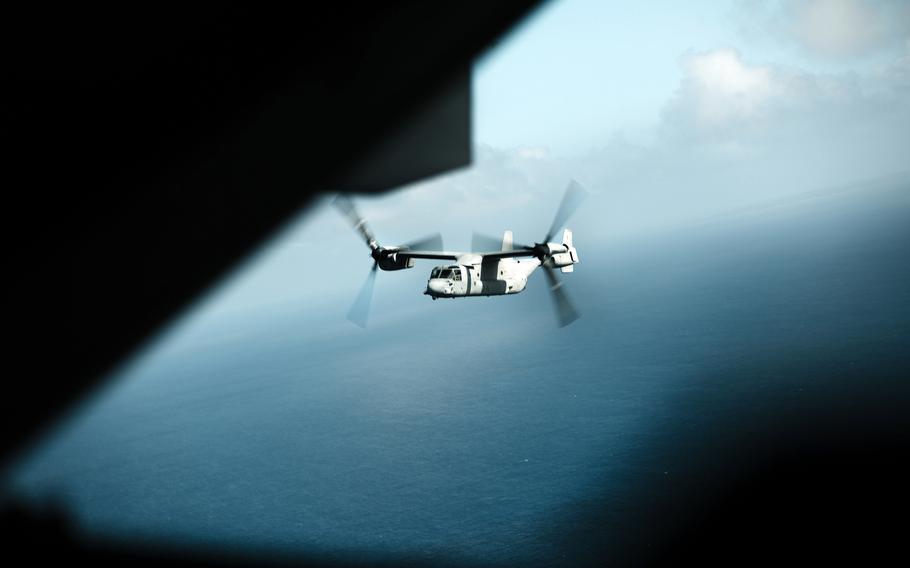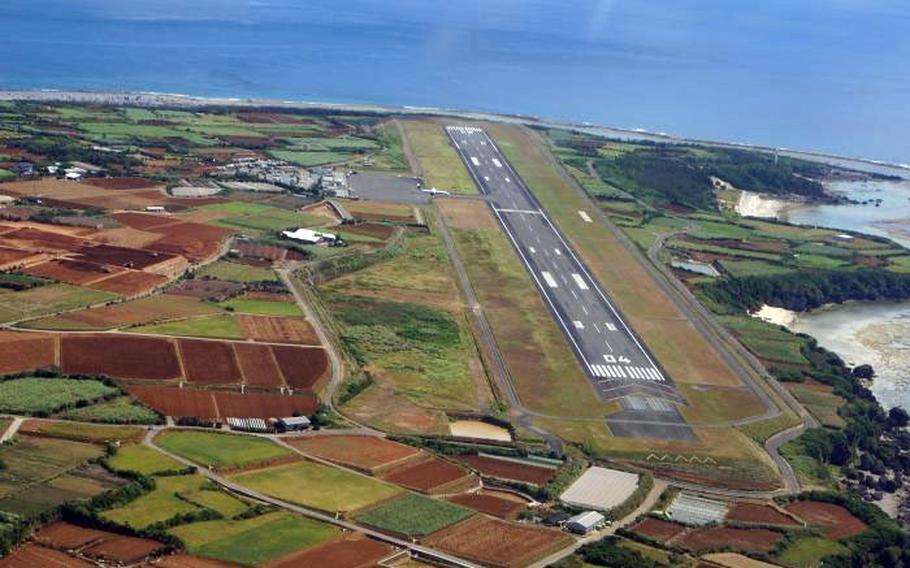Asia-Pacific
Marine Corps Osprey makes precautionary landing in Japan due to warning light
Stars and Stripes January 15, 2025

An MV-22 Osprey attached to Marine Medium Tiltrotor Squadron 265, Marine Aircraft Group 36, 1st Marine Aircraft Wing, flies in formation during exercise Keen Sword 25 on Okinawa, Oct. 28, 2024. (Manuel Serrano/U.S. Marine Corps)
A Marine Corps Osprey made a precautionary landing at a commercial airport in southern Japan on Tuesday after a warning light activated.
The MV-22B tiltrotor aircraft, assigned to Marine Medium Tiltrotor Squadron 265, 1st Marine Aircraft Wing, was doing routine training when the onboard warning prompted the pilot to land at Okinoerabu Airport in Kagoshima prefecture at 3:54 p.m., wing spokesman Maj. Joseph Butterfield wrote in an email Wednesday.
There were no injuries or damage to the aircraft or airport, Butterfield said.
“The pilots and aircrew performed as trained and prioritized safety by landing the aircraft,” he wrote. “The aircrew proceeded to land the aircraft safely in accordance with standard procedures.”
Okinoerabu Island is 37 miles north of Okinawa and about 330 miles south of Kyushu, the southernmost of Japan’s four main islands.
The tiltrotor returned to its home base — Marine Corps Air Station Futenma, Okinawa — without problems after the crew conducted “thorough troubleshooting,” Butterfield said. He declined to elaborate on the issue that caused the warning indications.
The Kagoshima Airport Office received a landing request from the Osprey at 3:44 p.m. and forwarded it to the Okinoerabu Airport Office, a spokesman for the Kagoshima office said Wednesday.
The aircraft departed at 4:07 p.m. after it was confirmed safe to do so, said a spokesman for the Kyushu Defense Bureau, an arm of Japan’s Ministry of Defense.
The incident caused one commercial flight to be delayed for about eight minutes, the spokesman said.
Some Japanese government officials speak to the press only on condition of anonymity.

An MV-22 Osprey assigned to Marine Medium Tiltrotor Squadron 265, 1st Marine Aircraft Wing, out of Marine Corps Air Station Futenma, Okinawa, made a precautionary landing at Okinoerabu Airport in Kagoshima prefecture, Japan, Jan. 14, 2024. (Kagoshima prefecture)
“Operating our aircraft safely and effectively is a top priority, and our aviators take great precautions to ensure the safety of the aircrew and the communities in which we operate,” Butterfield said. “… Any decision to divert to alternate landing areas is made out of an abundance of caution to prioritize the safety of both our aircrew and the local community.”
Ospreys have faced increased scrutiny following a series of accidents.
The United States and Japan grounded their tiltrotor fleets for nearly three months after eight airmen were killed when a CV-22B Osprey with Air Force Special Operations Command crashed Nov. 29, 2023, near Yakushima, an island south of Kyushu.
The investigation determined a catastrophic mechanical failure was to blame, compounded by a “lack of urgency” by the crew to address an engine problem.
U.S. tiltrotors were briefly grounded again on Dec. 6 after a CV-22B Osprey from Cannon Air Force Base, N.M., lost an engine but landed safely following warnings about metal gears in the proprotor gearbox.
On Dec. 20, Naval Air Systems Command, which oversees the Osprey program for the U.S. military, issued new guidelines for the aircraft’s transmission, specifically the metal gears inside the proprotor gearbox.
The Osprey is a revolutionary aircraft that takes off and lands like a helicopter but flies like a fixed-wing aircraft.